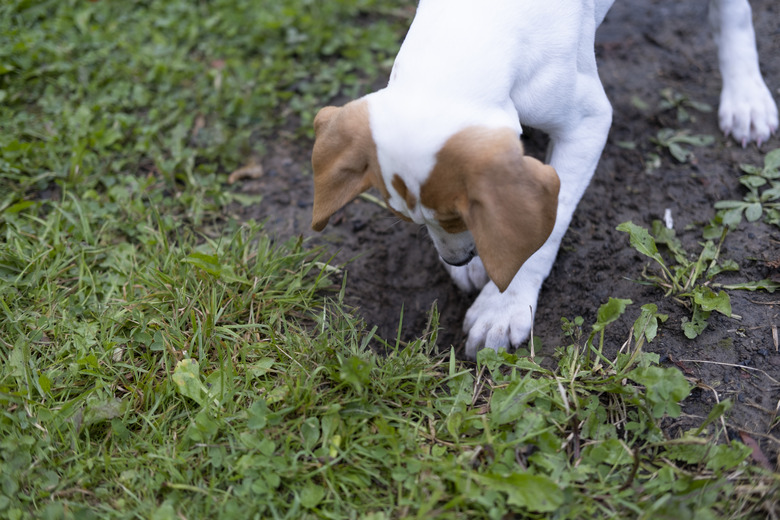How To Fill Holes In The Lawn With Soil
We may receive a commission on purchases made from links.
Lawn holes appear for various reasons, from bone-burying dogs and treasure-hunting children to normal post-construction settling. Tunneling rodents, such as chipmunks or moles, leave open areas underground creating miniature sinkholes. Not only are lawn holes unsightly, but they can cause accidents. The simple process of reclaiming those spots by filling them in with soil is basically the same across the board. Prompt, proper hole repairs are important for your lawn's beauty and safety.
Dig Out and Around the Hole
Dig Out and Around the Hole
To fix the hole, it is first necessary to dig down and see what caused the problem. Remove the top layer of sod around the hole with a garden shovel. Then dig down 4 inches into the soil, slide the shovel blade under the grass roots, and lift the sod out of the area.
If the hole was caused by a collapsing rodent nest, dig out the surface until you locate the nest so you can fill in the tunnels around it. If there is a rodent nest with young in it, you may wish to wait until the babies have grown and left the area.
Use Soil to Fill in the Hole
Use Soil to Fill in the Hole
Fill the hole with soil until it is approximately 4 inches below surface level. A blend of equal parts of potting soil, sand, and compost provides a good base in which replacement grass can root. Enriched potting soil alone works well too.
Use a tamper or a 6-foot, 4-by-4-inch board on end to compact the soil and prevent future settling. Repeat filling and tamping until the final layer is approximately 4 inches below the surface of the surrounding lawn.
Put the Sod Back in Place
Put the Sod Back in Place
Now is the time to put the sod pieces you removed at the beginning back in place. At this point, it doesn't matter if the dog dug the hole or it was due to natural settling. Use the old sod pieces to cover the hole. Now that there is a good base, the sod pieces should become well established.
If the hole was caused by a collapse or if it was old enough that grass covered it, the old sod should be sufficient to repair the area. If the hole was not covered with grass, fill it with soil until it is level with the top of the surrounding soil. Gently tamp the soil to fill the hole to the brim.
Cut New Sod Pieces if Required
Cut New Sod Pieces if Required
If more sod pieces are necessary than those you removed and saved, gather some more. Press a sod plug tool at inconspicuous spots in the existing lawn or use a sharp knife to cut 2- to 4-inch pieces of sod as needed for the hole.
Place these sod plugs gathered from the surrounding lawn at 6-inch intervals across the soil in the hole. Using sod plugs to reestablish the hole after the repair helps blend it in with the existing lawn. Water thoroughly. Keep the area moist until the sod plugs are established and begin to grow.
